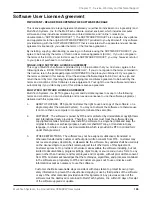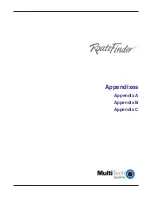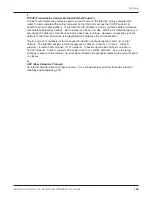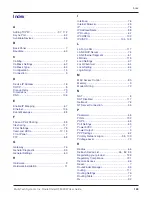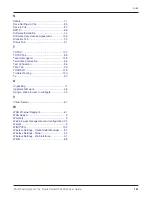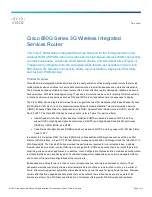
138
Glossary
Multi-Tech Systems, Inc. RouteFinder RF802EW User Guide
If someone on the Internet tries to access your network, the firewall function of the RouteFinder stops
the request. The device will not reverse translate network addresses unless you have specifically
allowed this feature using the Virtual Server function (IP Mapping).
NetworkAddress
The network portion of an IP address. For a class A network, the network address is the first byte of
the IP address. For a class B network, the network address is the first two bytes of the IP address.
For a class C network, the network address is the first three bytes of the IP address. In each case,
the remainder is the host address. In the Internet, assigned network addresses are globally unique.
P
Packet
A packet is a piece of a message transmitted over a packet-switching network. A packet contains the
destination address of the message as well as the data. In IP networks, packets are often called
datagrams.
Port Number
The term
port can mean the connector on your computer or it can be thought of as a server number.
Every service that travels over phone lines and modems has a standard port number. For example,
the World Wide Web service uses the standard port number,
80
and the standard telnet port is
23
.
Port numbers are controlled and assigned by the IANA (Internet Assigned Numbers Authority). Most
computers have a table in their systems containing a list of ports that have been assigned to specific
services. You can alos find lists of standard port numbers on the World Wide Web.
Protocol
A formal description of message formats and the rules two computers must follow to exchange those
messages. You can think of protocols like languages. If two computers or devices aren’t speaking
the same language to each other, they won’t be able to communicate.
PPP (Point -to- Point Protocol
)
PPP enables dial-up connections to the Internet and is the method that your network device connects
to the Internet. PPP is more stable than the older SLIP protocol and provides error checking
features.
R
Router
A device which forwards traffic between networks. If you request information from a location on your
network or the Internet, the router will route the request to the appropriate destination. The router’s
job is to listen for requests for IP addresses that are not part of your LAN and then route them to the
appropriate network which may either be the Internet or another sub-network on your LAN.
S
Server
A provider of resources (e.g.,file servers and name servers). For example your RouteFinder provides
Internet Access and can be thought of as an Internet Access Server.
Subnet
A portion of a network that shares a common address component. On TCP/IP networks, subnets are
defined as all devices whose IP Addresses have the same prefix. For example, all devices with IP
addresses that start with 213 .0 .0 .would be part of the same subnet.
SubnetMask /IPAddressMask
Subnet mask is what is used to determine what subnet an IP address belongs to. Subnetting
enables the network administrator to further divide the host part of the address into two or more
subnets.
Summary of Contents for RouteFinder RF802EW
Page 1: ...Model RF802EW Wireless Router Access Point User Guide ...
Page 5: ...Chapter 1 Introduction ...
Page 10: ...Chapter 2 Hardware Installation ...
Page 13: ...Chapter 3 Software Installation and Configuration ...
Page 24: ...Chapter 4 Web Browser Configuration and Management ...
Page 47: ...Chapter 5 Telnet ...
Page 54: ...Chapter 6 RouteFinder Manager ...
Page 84: ...Chapter 7 RouteFinder Monitor ...
Page 93: ...Chapter 8 LAN Client Settings ...
Page 116: ...Chapter 9 LAN to LAN Settings ...
Page 119: ...Chapter 10 Troubleshooting ...
Page 123: ...Chapter 11 Service Warranty and Technical Support ...
Page 130: ...Appendixes Appendix A Appendix B Appendix C ...
Page 135: ...Glossary ...



